In Colour. Accepting, Celebrating, Embracing

Brimbank Youth Council of 2022
Chelsea Truong, Helen Huynh, Gargi Katyare, Mariam Hussein, Jade Byers, Imarsha Pathirana, Binusha Pathirana, Allyza Catapang, Meagan
Mostert, Alicia Gec, Sebastian Foliaki, Soul Fuimaono, Vi Nguyen, Kara Evangelista & Emily Bui.
This resource was put together by young people as part of their participation in the Brimbank Youth Council program, supported by Brimbank Youth Services.
Special thanks to Jasmin Kaur for the use of ‘Flowers’, which was adapted for the front cover.

Acknowledgement of Country
We acknowledge the Traditional Custodians of the land now known as Brimbank; These are the Wurundjeri and Bunurong Peoples of the Kulin nations. We pay our respects to elders, past, present and emerging.
We acknowledge the devastation of colonisation, post-colonialism, and the disparity between Indigenous and non-Indigenous Australians that still exists today.
We recognise and celebrate the rich culture of Aboriginal and Torres Strait Islander communities, their collective strength, and continued connection to the land.
Sovereignty was never ceded. Always was, always will be Aboriginal Land.

Editors’ Letter
Brimbank is one of Australia’s most culturally diverse communities, with almost half of its residents born outside Australia, and more than half speaking a language other than English at home.
This booklet is an exploration of young people’s connection to culture, and highlights what cultural diversity means to us by providing a glimpse into our stories, our experiences and our lives.
The Brimbank Youth Council is a representative group of young people aged 12 to 25 who are strongly connected to Brimbank. We spend the year representing fellow young people at meetings with Council members, identifying areas of improvement in our community and working on a project that we care about. This year, the focus of our project is cultural diversity and by sharing what being ‘culturally diverse’ means to us, we hope we can normalise our experiences so young people can feel heard and celebrated.
As we received submissions, there was no doubt that there was a common theme- a theme of belonging, acceptance and pride. We want to celebrate the beauty of cultural diversity in Brimbank. We thank every person who submitted something to this booklet or worked with us to put it all together.

We hope these stories inspire you to connect with culture and instil a sense of pride and belonging.
Together we are diverse and together we are Brimbank.




Contents 7. Kaleidoscope World Kara Evangelista 8. Where are you from? Nethuli Bandara 10. Me and My Culture Devika Chaudhary 13. Cultural Acceptance Chloe Luk 17. All the Red I Ignored Emily Bui 20. Untitled Thea Trinh 22. My Name Allyza Catapang 25. Against the Grain Abubakari Irakoze 26. Culturally Lost Josh 29. Outcast Jackey 30. Being Brown and Proud Zahrah Bhatti 33. Portraits of My Parents Parminder Kaur 34. Imarsha’s Travel Diary Imarsha Pathirana 39. Scrapbook and Celebrations Helen Huynh 40. Flowers Jasmin Kaur
41. Portraits
Jasmin Kaur
47. Grandmother’s Tapestry (1952)
Alicia Gec

53. Cultural Symbiosis

Emily Unity
59. My Journey
Abubakari Irakoze
43. Bazaar
Zahrah Bhatti
51. Portrait of My Father
Lily Nguyen
55. A Work in Progress
Chelsea Truong


Kaleidoscope World
 Kara Evangelista
Kara Evangelista
I was born in the Philippines, migrated to New Zealand when I was 10 then moved to Melbourne when I was 18. I’m now 25 and I feel that my connection and pride with my cultural identity has deepened over the years.
Migrating to a new country at a young age was difficult. There were times when I felt shame because of how my family behaved because I felt like we were being judged. That shame was rooted in the fear that we didn’t fit in.
But as time went by, I realised that this is our home too.
We don’t need to be exactly like the locals and completely change our customs and behaviours just because we live here. Our culture is a part
of us and that’s something we should be proud of.
I don’t like the saying “I don’t see colour.” Because the fact is, we live in such a beautifully diverse city. And that diversity, the rich and amazing cultures around us SHOULD be seen and it should be celebrated.
I’m proud of my background and I hope other migrants can feel the same way. Everybody will have a different journey and that’s okay.
I just hope that at the end, we all realise that there’s nothing to feel ashamed of and that what makes us different is what makes us shine.
I am Filipino and I am proud
Where are you from?
Nethuli Bandara
“Where are you from?”
“No, where are you really from?”
Ah yes, the age old question. These were the first words I remembered hearing when I came to my primary school.
I was born in England but both my parents came from Sri Lanka, a very tiny island nation under India. Whenever I said I was Sri Lankan, I vividly remembered kids asking if that was in India and then proceeding to ask if I was Indian. Fun times.
People know where Sri Lanka is now solely thanks to Nicki Minaj (Queen!).
But honestly, I’m super proud to be Sri Lankan. Even though the country has a whole lot of faults and is not
doing well right now, I do love my culture. I celebrate it in so many ways. Every year we celebrate Sinhala New Years, eat traditional food almost everyday and call our family back home constantly.
I love listening to Sri Lankan songs and performing in Sri Lankan events. I’ve done cultural productions and one of my favourite hobbies is my cultural dancing that I do every Saturday.
I’ve attended Sri Lankan Language school for 10 years and know the language quite well. I am so proud to be able to know the language and engage in these events as they’ve shaped me into the person that I am today.
My closest friends are all Sri Lankan and being Sri Lankan is honestly such a big part of my identity. I will admit it hasn’t been easy,

sometimes it gets suffocating, having to balance both my cultural traditions and events that I love with school and ‘fitting in’ with others.
From getting called ‘a curry’ and the constant worry of whether someone will not like me because I look ‘different’, I’ve had my struggles. It’s not easy being a brown girl as there’s always problems on both sides.

Having to fit in a ‘Western’ modern society as well as honour and respect my traditional roots, it gets hard.
But where I can, I’ve learnt that education and understanding is the most important thing.
People from my school actually really liked when I showcased my traditional dancing. I’ve been fortunate enough to have neighbours that wish us well when we have traditional holidays and friends that ask to watch my dance concerts.
From being embarrassed and scared to wear a traditional
dress to the primary school multicultural days or hating having my mum come in because she ‘talked different’, this small acceptance of my culture has been really beneficial. Australia has such great multicultural diversity and being accepting and open to all people is an amazing thing that I’m so grateful for. We came to Australia for a better life and my parents have sacrificed a lot.
I am still trying to figure out myself and who I want to be. In spite of all this, I want to continue to showcase my culture, by doing this I can honour my heritage in a small way that makes me proud to say;
I am Sri Lankan.
I am Sri Lankan and I feel powerful
Me and My Culture
Devika Chaudhary
Coming to Australia at six was genuinely challenging to fit in. You were always an outcast at school, trying to fit into the norms of school and going through immense bullying. There were many challenges to the acceptance of the culture. I felt like I was stuck in the middle of being too Indian or too Australian. It was complicated to accept who I was. However, at the age of 15, I was moved into a multicultural school with many different cultural backgrounds and mixed social groups which allowed me to start accepting and connecting with my culture.
While in university, I was allowed to be a part of an Indian group with several members who were genuinely welcoming and celebrated all events, which made me feel truly close to my culture. Another big part was the Brimbank Council; Brimbank is genuinely a fantastic place
to be. There are so many cultures, and being a part of this area allowed me to explore, gain knowledge about other cultures and meet other young people that went through similar experiences, which made me so comfortable, and I felt it wasn’t just me going through the same experience.
This influenced me to explore and connect to my culture further, and now I am a part of an organization of Women of Brimbank and get to share my experience with other young people that may be going through the same experience and provide them with a place where they can explore their culture too, so they feel more connected.

My parents have been extremely important in accepting and being proud of my culture. They always celebrated different events with me and taught me the meaning of all events, which was the biggest aspect of accepting my culture.


I am Indian and I am proud

I am proud to be who I am today and to represent my culture to others.

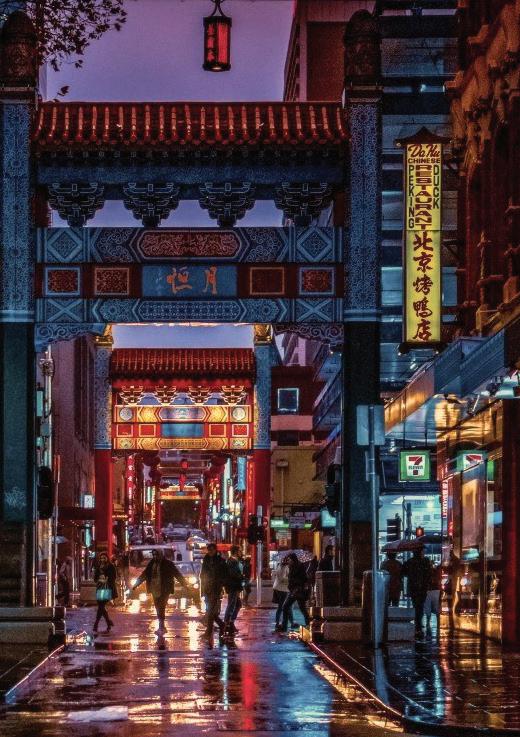
Cultural Acceptance
Chloe Luk
To me, cultural acceptance is feeling proud and embracing my own culture.
This includes my cultural traditions, my language and upholding my cultural values. Our culture is a core part of our identity and it is what makes us unique.
To this day, I am still in the process of fully accepting and embracing my own culture as a second generation Chinese diaspora.
Growing up, aside from drawing our cultural flag, school had little emphasis on celebrating students’ individual ethnicity. I found myself switching from eating fried rice, Chow Mein and Singapore Noodles in a thermos, to eating meat pies and ham sandwiches in a zip-lock bag for lunch. I thought that this would make
me better able to fit in, to avoid stereotypes, to be more like my non-Asian peers in some way.
I gradually shifted to speaking English as the primary spoken language in my Cantonese home. My parents would still speak Cantonese to me, yet I would instinctively respond in English, mingled with the least possible Cantonese words here and there.

Whenever my family went over to my grandparents’ place, I didn’t communicate a lot to my grandparents as I had little confidence in speaking Cantonese. Nevertheless we were still very close.
In retrospect, I became much more disconnected to my Chinese ethnicity as I tried to conform to the social environment that I was developing in.
I am Chinese-Australian and excited
I became someone who ‘ ’, a Cantonese phrase meaning you can listen and understand but you cannot speak; essentially you’re unable to use the language to meaningfully communicate with someone.
It was only when I viewed a Youtube video a couple of years ago of a Canadian-born Chinese woman speaking in Cantonese about why the language is so important to her, that I experienced an epiphany. It dawned on me that I could not speak Cantonese that well and that I had struggled to accept and embrace my ethnicity. There was a disconnect that I felt between me and my family as well as my cultural roots.

With the passing of my grandma, I felt a sense of regret realising that I never had the chance to ask about her life story or about her thoughts and feelings as I didn’t have meaningful conversations with her in
Cantonese. I was inspired and compelled to improve my Cantonese so that I could communicate with my family. I now make an effort to predominantly speak Cantonese to my parents. I listen to Cantonese podcasts and watch Cantonese Youtubers to better immerse myself in the language.
During lockdown, I often called my grandpa and asked him how he was going and listened to stories about his past. I never would have previously done this, had I not embarked on the journey of culture acceptance and improving my Cantonese.
Now, I get excited by the opportunity to speak Cantonese whenever I meet a Cantonese speaker and I feel much more confident and proud being a Chinese-Australian.
I think there is still so much more that I can do as I continue my journey of accepting, celebrating and embracing my Chinese ethnicity.





All the Red I Ignored
Emily Bui
I never really cared about Vietnamese culture.
It was there, sprinkled across different areas of my life, breathing in the walls of my home, but to me, it was just background noise, something that I would block out if I could. The fish sauce, the Paris By Night playing on the television every weekend, my mum’s off tune singing to some folk song, it was all there.
On occasion, I’d stop and catch myself enjoying these things. But with the blink of an eye, I’d turn away, resuming my westernised or ‘normal’ way of going about my day.
I was always good at Vietnamese for some reason. I could speak, read, write, and translate. But when my parents demanded I take
Vietnamese as a VCE subject, I saw red and protested. But of course, I couldn’t say no, they were Asian parents after all. So I took it. For two years, I sacrificed the luxury of sleeping in on Saturdays, instead, attended dimly lit classes where I was taught random facts about Vietnamese culture. Ha Noi is the capital city, it is unlucky to throw rubbish away on (new years), red is the luckiest colour… yawn.
The only ‘Red’ I cared about was Taylor Swift’s re-recorded album.
Fast forward to a month before my Vietnamese oral exam (where I would stand before two examiners and show off my amazing speaking skills and my extensive knowledge on

I am Vietnamese Australian and I feel appreciative
Vietnamese New Year’s day), articles about were scattered around the house, the television played videos of Vietnamese folklore and tales non stop, the house trembled at my father’s booming voice quizzing me about the kitchen god, .
My life was turned all sorts of sideways. I went from being a latte loving, rom-com reading girl to an expert in the different trees associated with Vietnamese New Year’s Eve.
Two weeks before my oral exam, I sat on my parent’s bedroom floor and cried. I was frustrated, and angry at having to do something I had absolutely no interest in. Every time I closed my eyes, I could hear the blood thrumming through my veins, but I thought, after this, I would never have to even think about anything Vietnamese related ever again.
On the day of my oral exam, I woke up with a raging
headache. I put on my áo dài “They will like you more with your traditional clothes on”, my Vietnamese teacher insisted, annoyed that I would have to miss my Australian Politics class.
Arriving at the assessment centre, I saw that other students were not in their traditional clothes. I rolled my eyes and visualised screaming at my Vietnamese teacher. The first half of my examination went well despite the sleeves of the áo dài being too tight on my arms. The examiners were a man and a woman and they threw questions at me like bullets.
“What are some daily activities Vietnamese people avoid doing on ? Why?”
“Why is such a special holiday to Vietnamese people?”
I answered each question confidently, the words imprinted in my brain and ready to be verbalised. “Why do you think the colour red is associated with ?”

It was a question I had prepared for, in fact, it was the easiest question. The answer was on the tip of my tongue, ready to be spat out, but instead I paused in realisation. It was probably the worst time to come to a realisation, but red. Red was a lucky colour.
I was lucky. Lucky to be born into a culture with its centuries long history and traditions, its food and its stories, its blaring redness that I chose to ignore instead of appreciate.
I wish my story on cultural acceptance was more significant, but it happened in a matter of seconds. Nothing really changed after that day. Vietnamese culture and customs remained constant in the background of my life, but instead of blocking it out,
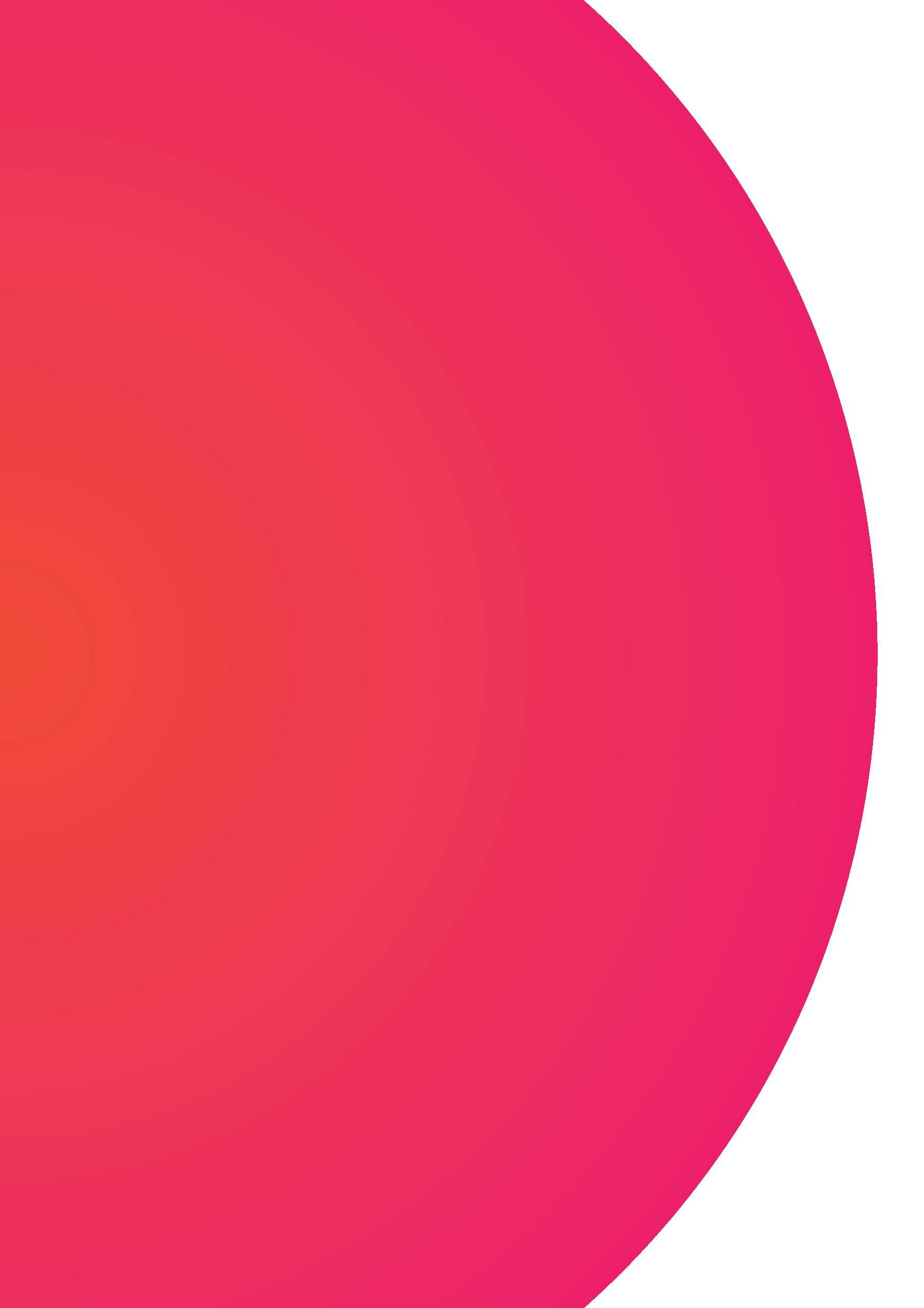
I let it seep into my skin and allowed it to be one of the many things that define me.
It wasn’t over then, I still had my written exam to sit. On the day, I woke up sweating and walked to school in the uncomfortable warmness of spring.
I wore a red turtleneck sweater I stole from my father and felt the heaviness of the books on my shoulder as I waited for the pedestrian green light. My exam wasn’t until the afternoon and I felt in my bones that it was going to be a dreadful wait. But in my mind, the words were running in circles:
I am Vietnamese Australian and I feel appreciative
“Oh, I’m a lucky one”.
Thea Trinh Untitled
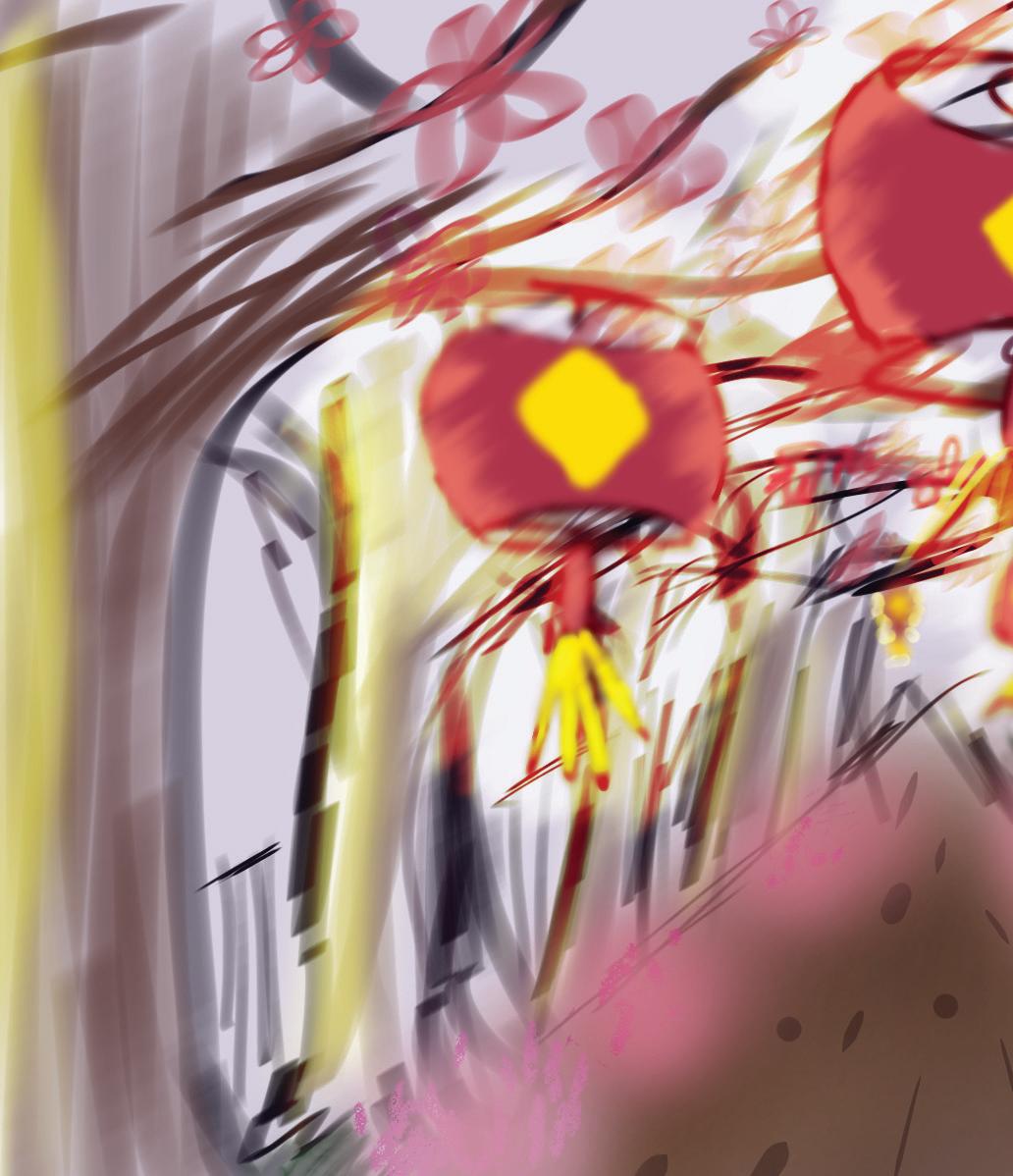

I am Vietnamese and I feel grateful for being a part of such a family-oriented culture


My Name
Allyza Catapang
I walked with one of my friends after an outdoor game, and on the way back he asked an unusual question.
“Teach me how to say your name,”
he asked casually. I turned to look at him, head tilted in confusion.
The question caught me off guard, it shouldn’t have, yet I found myself confused and happily surprised.
When I arrived in Australia, I grew accustomed to the unfamiliarity with the way people said my full name, especially my last name. It wasn’t offensive. I appreciated the attempt at least, but it was rare for me to be asked how to pronounce it. I can remember the few times where I was asked by one of
my teachers or the cashier at Dymocks who signed me up for a store membership.
Growing up as an immigrant in Australia, there is always that lingering thought in the back of my head where I am someone looking inside from the outside.
It feels as if I’m there, but never really enclosed in the warm space of society. Kids in my school were never particularly kind to me, i f anything it taught me that people can be cruel. In particular my name, and the way I spoke were repeated back to me by others like a vicious parrot.

“My name?”
“Yeah, your full name,”
he said, putting his hands in his pocket as we continued walking.
“You know my first name though.”
Learning to accept myself is still an ongoing journey. To unlearn the shame, and the consequences of feeling ashamed of who I was, which takes time. It’s a painstakingly lonely journey where I had to distance myself and walk away from the people who allowed me to perpetuate this mindset. I had to learn to be alone with myself or I would have been stuck hating myself forever.
“Well, I want to know how to say your full name, Including the last,”
he answered. And there, I smiled. I repeated the syllables of my full name (Kah-tahpang), and he said them back. It was a back-and-forth exchange where I also told him what it meant. In our conversations I told my friend of my memories of back home.
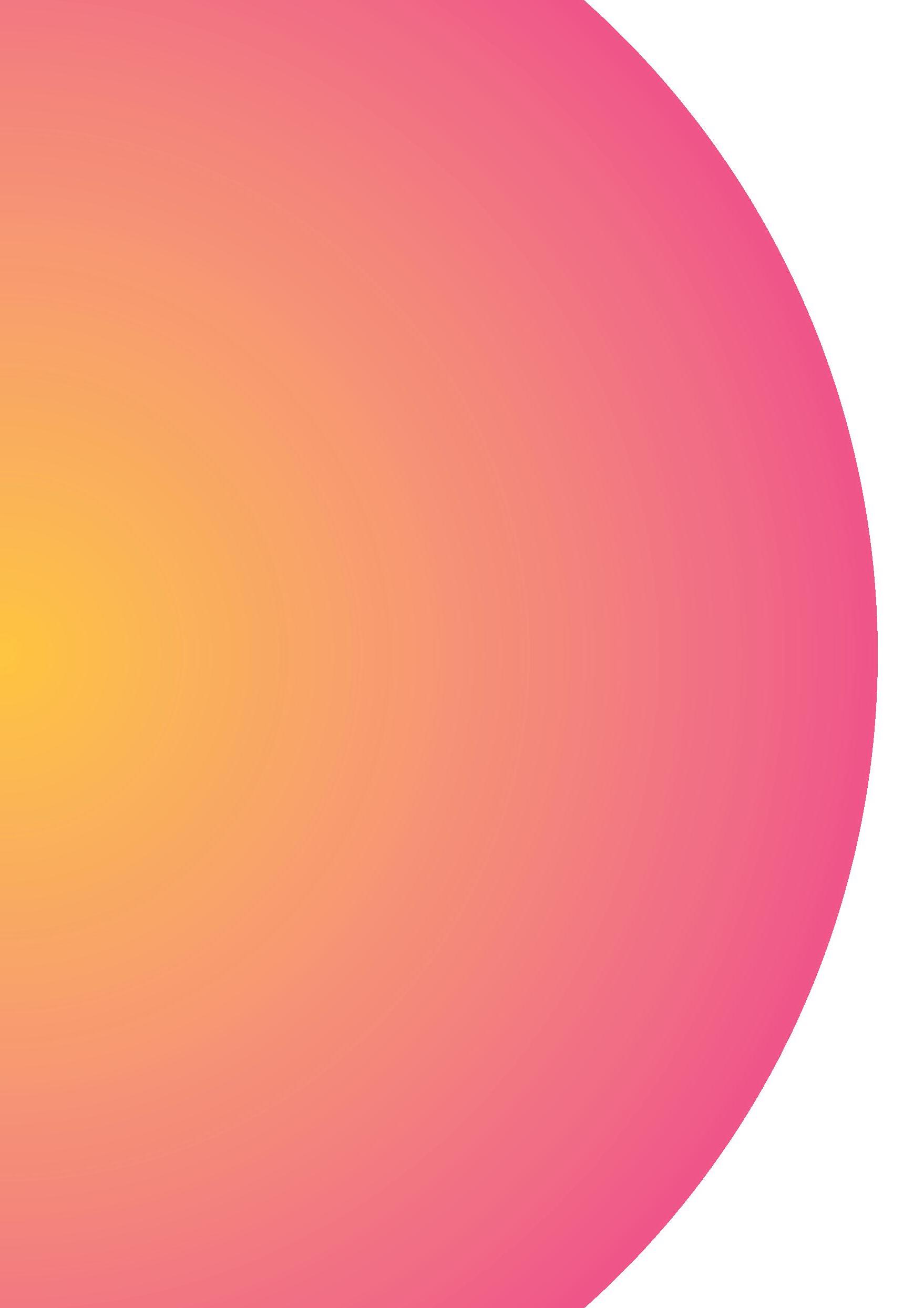
We laughed, and I have never felt so reassured.
This is what actual acceptance and friendship feels like. Sharing my culture and my identity with the people I care about, especially with my friends is an achievement I never thought I’d be able to do. This won’t be the last, but I’m grateful for moments like these.
I am Filipino and I am proud of my culture

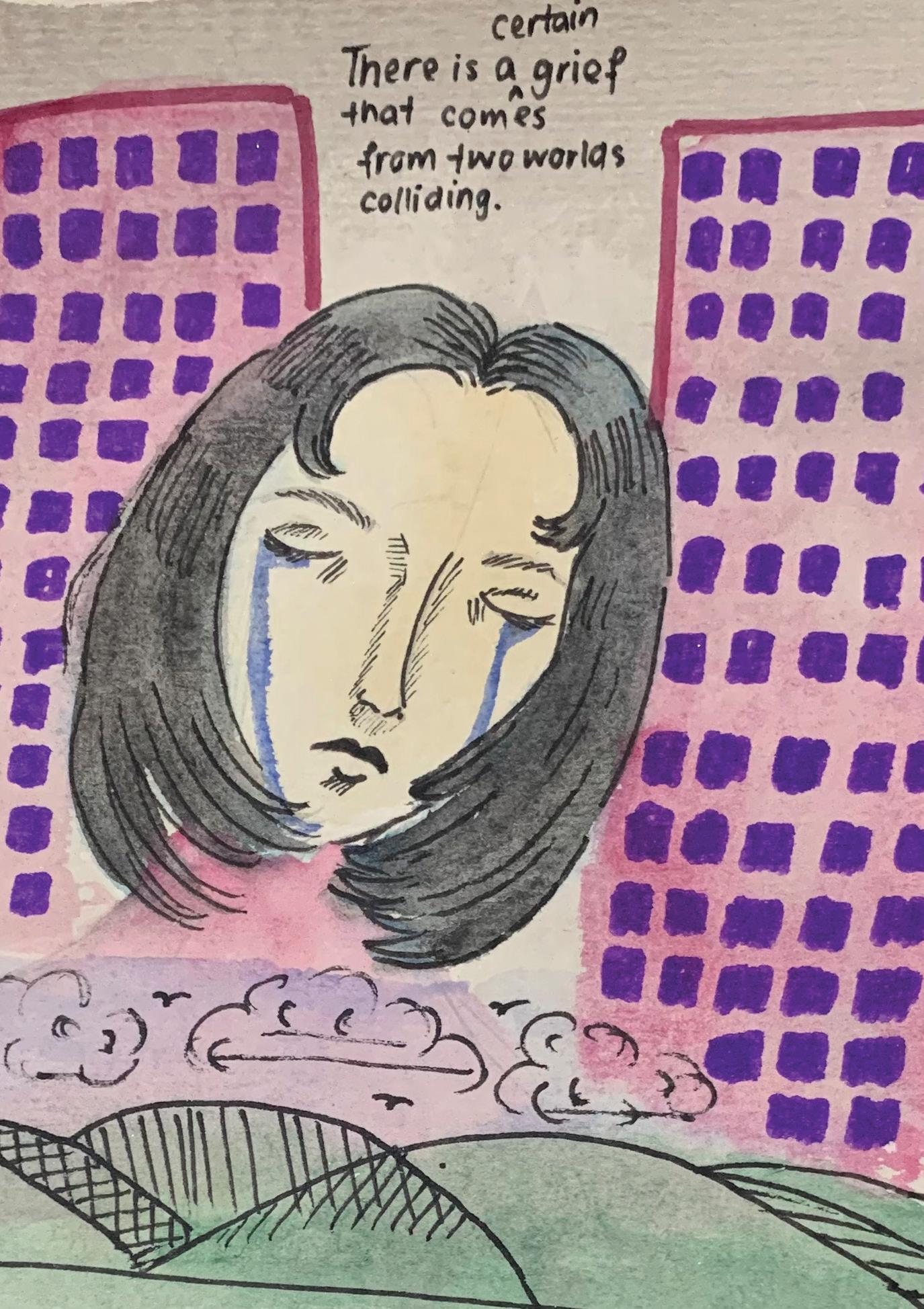
Against the Grain
 Abubakari Irakoze
Abubakari Irakoze
My journey has always been about trying to become the best me I can become in a western civilisation without giving up my cultural identity. Even so, there are things such as foods that I guess I’m not confident about sharing with others because I fear what they may think of it.
Despite this, I have taken up lots of opportunities to build myself up such as student leadership or workshops. It has come with some comments from other young African boys saying things such as me “trying to be white” when
I’m proud to always be an outlier in that sense if it means I can reach out to someone else who has been interested in such things but didn’t know how to get into it. A lot of what I do is to be able to provide a supporting hand to other young African males especially.
I know there are great minds amongst them that are overshadowed by the things they hear and see so often.
I am a proud Burundian trying to leave a positive mark in history
I’ve simply tried to live outside the narrative we’ve all been painted with.
Culturally Lost Josh
A young boy was born and raised on the very grounds the Aboriginals cultivated for thousands for years. Surprisingly, he knew nothing about the natives of the land. He was different. His skin was yellow and his parents were migrants from overseas.

That boy, he was me.
Ever since the early 2000s, I grew up being one of the only Asian kids in my year level or the whole school at one point. Well yes, most people are shocked at that fact because Melbourne is now so multicultural and bustling with a huge variety of ethnicities and cultural backgrounds.
But… it most certainly wasn’t that way just a decade ago.
You could almost feel it. Bakeries across the road, fresh fruit from the Italian
grocer and your everyday milk bar was just a short walk away. A hop, skip and jump on the hopscotch drawing in the street, a friendly gathering around a barbeque and best of all the Christmas lights all around town when the festive season rolled around. It was only years later that I discovered Chinese lanterns and Chinatown itself.
Having grown up now, I could see how different my parent’s thinking and belief system was from the parents of my peers. I’d be inside writing my homework while they’d be out chasing each other in a game of tag.
“There’s Josh again with his lunchbox filled with rice and two long sticks for utensils, I mean how do you eat with those?”
Quite the mystery indeed but eventually I got to show off. After school I’d be sitting with a tutor figuring out math problems while my friends would be kicking a footy across a gigantic oval. But what they didn’t know was that I’d have an extra new year every single year! Chinese New Year.
While my culture was heavily influenced by Chinese traditions and values, I wasn’t exactly Chinese. My parents both came from Taiwan, which had its unique set of differences from China. So when it came to socialising with my Chinese friends, I had heaps to learn even in terms of jokes and the lingo. At the same time, I was also heavily influenced by Australian culture but not fully immersed in it. I didn’t follow the AFL like a hawk, I didn’t go out and drink beers every Saturday night with the boys. So, it was only natural that I found my home with Aussie-born Asians in and around Melbourne. It was only in my penultimate to final years of high school that I got to connect with
people who understood my cultural struggles. We existed between cultures, identifying with our Asian heritage but also creating our own fashion and ways of communication. I was lucky enough to visit Taiwan multiple times and savour the experiences of street food, family dinners, festival celebrations and cultural dances. It felt like a second home that I could enjoy with my cousins and grandparents; everyone there was so welcoming and very friendly. I always loved the stories my parents would tell us of the places they used to live and what it was like growing up and socialising there.
Being there in person, it felt like such an honour to be a part of their world, imagining what it was like.
To me, my culture and ethnicity has meaning and human connection behind it. It’s not second nature but it is close enough to be a key pillar of my identity.
I am Taiwanese and honoured to be; Australian and proud and privileged to be.



Outcast
 Jackey
Jackey
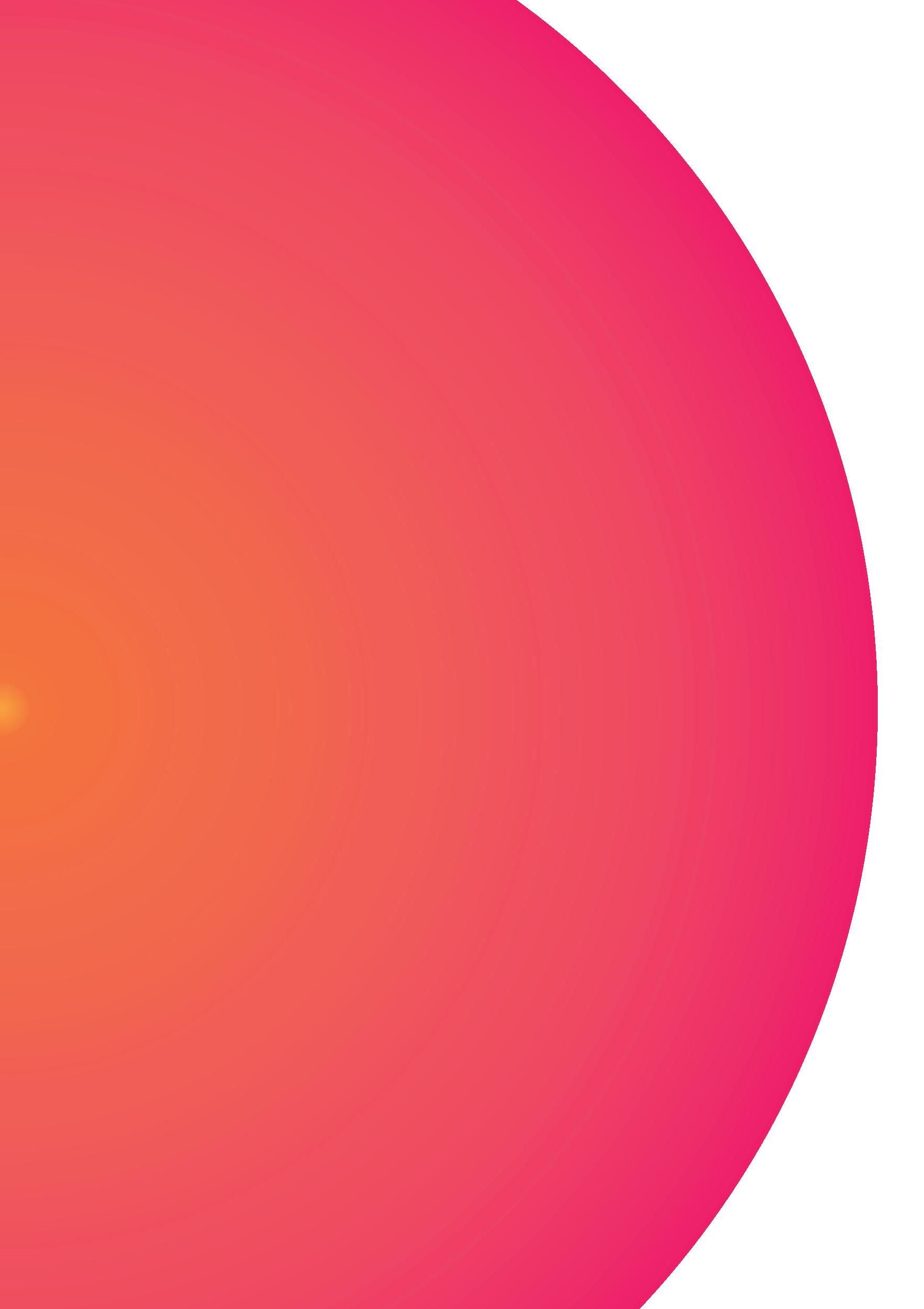
I remember growing up I’d get really anxious and self-conscious when having photos taken of me because my eyes weren’t as big as western people.
I’d literally force myself to open them up more in pictures.
Now it’s not as big of a deal because there are more Asian people around me, but I definitely felt like an outcast as a kid.

indifferent
I am Chinese and feel
Being Brown and Being Proud
 Zahrah Bhatti
Zahrah Bhatti
I grew up in an extra-large family of around 80 people.
While being the youngest of most of my cousins certainly had its perks, like being spoilt with affection and having endless photoshoots, it did come with its downfalls too. One of the major downfalls was not having room to speak up. Often, I would stay silent even when I had something to say because there were already so many others speaking. I didn’t want to cut someone off and appear rude. A mixture of these situations, and my inherent nature meant I turned out to be quite a shy person. Only speaking comfortably and openly when I got to know the person really well, even with my own cousins.
Fast forward a few years and I was starting high school at a public school close to
home. Because I did my primary school years in an Islamic school, going to a public school was a huge culture shock for me. Almost everyone at my new school was White. There were very few people of colour and even fewer Muslims. Because there were so many other White people around me, I tried very hard to fit in. Eventually, I learnt I will never fit in with them because I was visibly different. However, that doesn’t mean I should’ve been treated any less. Nevertheless, instead of trying to fit in, I closed in on myself more by fitting into the stereotype of ‘innocent, quiet, shy’ that I was given. I had already accepted I was so different; I didn’t want to stand out more by going against this stereotype that allowed me to be locked in a safe bubble.
I was locked in this bubble until around VCE. I became great friends with a South Asian girl who was loud and proud of her culture. Seeing her courage made me believe I was capable of being the same way. But even though my confidence in my voice grew, I was still ignoring my heritage. A large part of that originated from racism I encountered. It took me a long time, and my journey is still continuing but I am slowly realising my worth.
My turning point was realising that no one is better than me in any sense simply because of the colour of their skin.
I may look different and hold different values but that does not mean I am inferior. And if someone has made me feel like I am, I remind myself that they too are human and may be struggling to accept themselves. I strive to be the best representation I can be of my religion and heritage because the truth is, people are victims to generalisation. And if it’s one thing I’d want
people to generalise about Muslims and Pakistanis, it is that they are kind, welcoming and open people. But this is my story. And I guarantee yours would be different.

If it’s any consolation, know that you are different.
Own your difference. Without us people of colour, the world would be a bland place. You are not inferior, nor superior. You are humble enough to listen to others but confident enough to know your worth. You are a person of colour. You may not accept it right now and that’s okay, just know in your heart that it is not the only thing that defines you. You are more than the colour of your skin.
Pakistani and happy to be
I am



Portraits of my Parents
Parminder Kaur
The portraits of my parents entitled (dad) and (mum) explore me reclaiming my own cultural roots, as well as paying tribute to the soil which has nurtured us as immigrants. Growing up as Indian immigrants on unceded Wurundjeri land, I have learnt about the importance of reciprocity and our interconnectedness with the land. There is something really important about seeing brown folks represented with love and care in images as it gives us permission to extend that same amount of kindness and warmth towards ourselves.
I am Indian and I am proud

This is perhaps the most intimate and personal work from my entire portfolio.
Imarsha’s Travel Diary

Imarsha Pathirana
3-19 March 2018

2 Weeks
whilst watching the movie IT. I also ended up watching a bit of The Hunger Games. I got to take some amazing cloud and sunset photos.
Sunday 4th March Singapore
Saturday 3rd March Melbourne, Australia
Today, I finished packing for Sri Lanka. My family and I all waited for the taxi with our luggage. Once we got into the van we talked until we got to Tullamarine Airport. We arrived at the airport on time, we went passed through our luggage and went through the security checks. The plane took off and I vibed to Taylor Swift’s Album. During the flight, I had beef with rice and ginger beer
We arrived at Changi Airport in Singapore. After lunch, we decided to catch the sky train to the bigger shopping centre. I had been on the sky train before; however, I had forgotten how it felt like. There was no driver for the sky train, it was run by electricity. Singapore’s infrastructure was greatly developed so was its technology. The toilets were very clean since there was always a cleaner at the toilets but the worst part was that they auto-flushed. One moment and the toilet flushed. Super annoying. We went to the shopping mall
by the sky bus and explored the airport. We gazed at the butterfly garden which was so humid inside and looked at the koi fish pond full of bright orange fish. We made our way to the cinema, which was showing Dunkirk, a war movie featuring Harry Styles!
Monday 5th March
Colombo, Sri Lanka

We arrived in Sri Lanka early in the morning and we all so happy we had finally arrived. We made our way through immigration and finally stepped foot in Colombo after 6 years. A van taxi took us to the apartment we were staying at in Nawala. When we arrived at the apartment it was around 4 am, we were all tired but so excited to be there. Our apartment was on the top floor, and we had to walk so many stairs to get to the top. In the hot, humid weather we were all dying of tiredness. Finally, we reached our apartment. We unpacked and went to bed at 6 am after taking some incredible sunrise photos.
We woke up at about 12 pm and had breakfast consisting of Sri Lankan pastries and roti. We were all very excited to go to our grandparent’s house. We took a taxi there and saw our relatives for the first time in 6 years. When we arrive, we all began catching up about our different lives. We spent the day at their house, talking and eating.
Sunday 11th March
We woke up early and got ready to go to the hotel. The cab arrived at 8:30 and we set off to Earl’s Reef in Beruwala. We arrived to the salty smell of the beach and the waves crashing against the sandy floor. All of us checked in, we enjoyed our cool lime drinks whilst sitting on the couch. After being allocated to our room, we settled, dressed up in our

I am Sri-Lankan Australian and am immersed in these amazing cultures
swimsuits and went to the beach. Compared to Australia’s beaches, Sri Lanka’s were much better. The water was lukewarm and soothing and bright blue. We swam on the beach for about one hour and went to the pool.
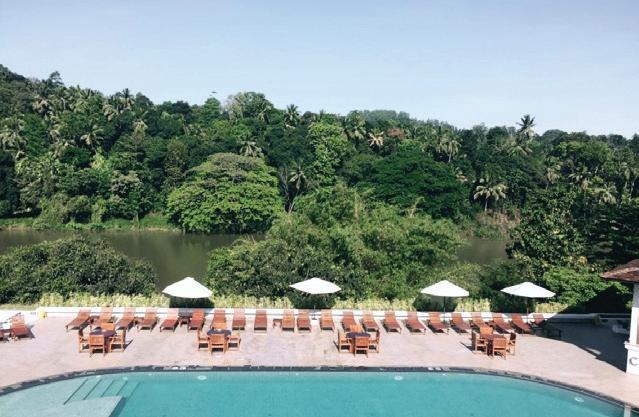
Monday 12th March Beruwala, Sri Lanka
We had breakfast at the restaurant which included French toast, waffles and cakes. I also had fresh fruit including papaya, pineapple, guava and watermelon. There were noodles, omelets, sausages, potato wedges and bacon as options too. It looked and tasted so delicious!
Wednesday 14 March

We went to have dinner at the restaurant. It was really yummy as there were a variety of Sri Lankan foods and international foods. I had biryani with lamb chops, beef, chicken, vegetables and curries. I also had egg hoppers. For dessert, I had mini puddings and cakes. We all took photos of the food as the deserts we presented so well that they could capture peoples’ attention. After dinner, we went straight to bed.
We set off to Kandy at 9 am after breakfast. On the way, we stopped at Pinnawala Elephant Orphanage and saw the elephants trotting towards the river to bathe. Today was hot so we were all sweating so much. We also went to see the elephants being milked and whilst we were watching, the two elephants started fighting!
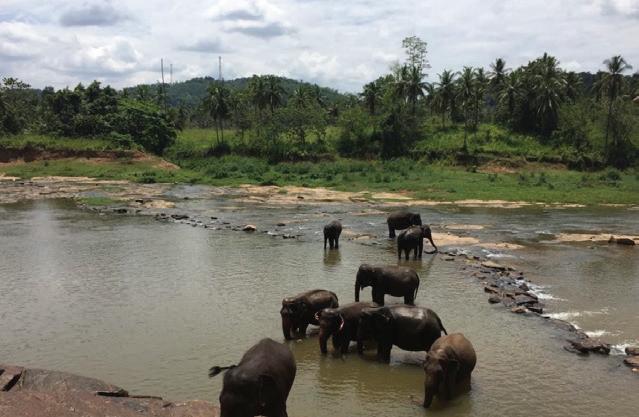
Thursday 15th March
Kandy, Sri Lanka
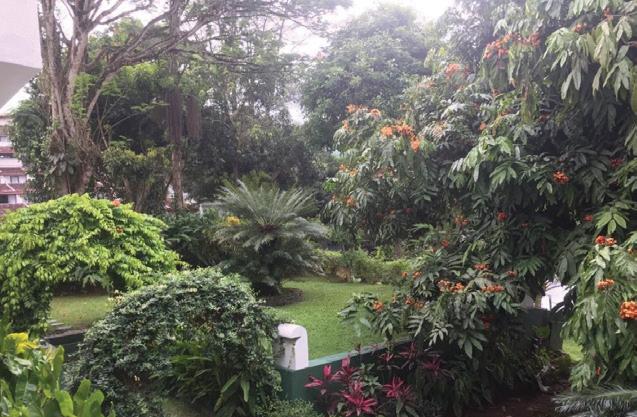
We all went to go on a boat ride on the river. We gazed at the wildlife near the river including birds, komodo dragons, forest and coconut trees. The ride took 30 minutes, but it felt longer as we were all caught up looking at the fascinating landscapes. I captured many great photos!
Friday 16th March
We set off to Colombo by van. First, we stopped by The Temple of the Tooth in Kandy, it was the oldest and largest temple in Sri Lanka! It was so hot and humid today, so we didn’t stay long at the temple. We prayed and laid flowers there. All of us also went to look at the museum where there was Raja, the stuffed elephant that had served the temple for many years. There were also many old statues and carvings of the original temple.
Sunday 18th March

Colombo Sri Lanka
We woke up early to get ready for the flight back to Australia. Once the taxi came we all drove to our grandparents house and said our goodbyes. I cried a lot! We then drove to the Airport and checked in, ate Burger King and drank iced coffee. We then waited until we could board the plane.
Monday 19th March
Melbourne, Australia
I woke up on the plane and had a mushroom omelet, hashbrowns, tomato, and sausages for breakfast. We arrived at Melbourne Airport at 10am, collected our luggage and went home. Our family holiday to Sri Lanka after 6 years would be a memorable one!
I
am Sri-Lankan Australian and am immersed in these amazing cultures
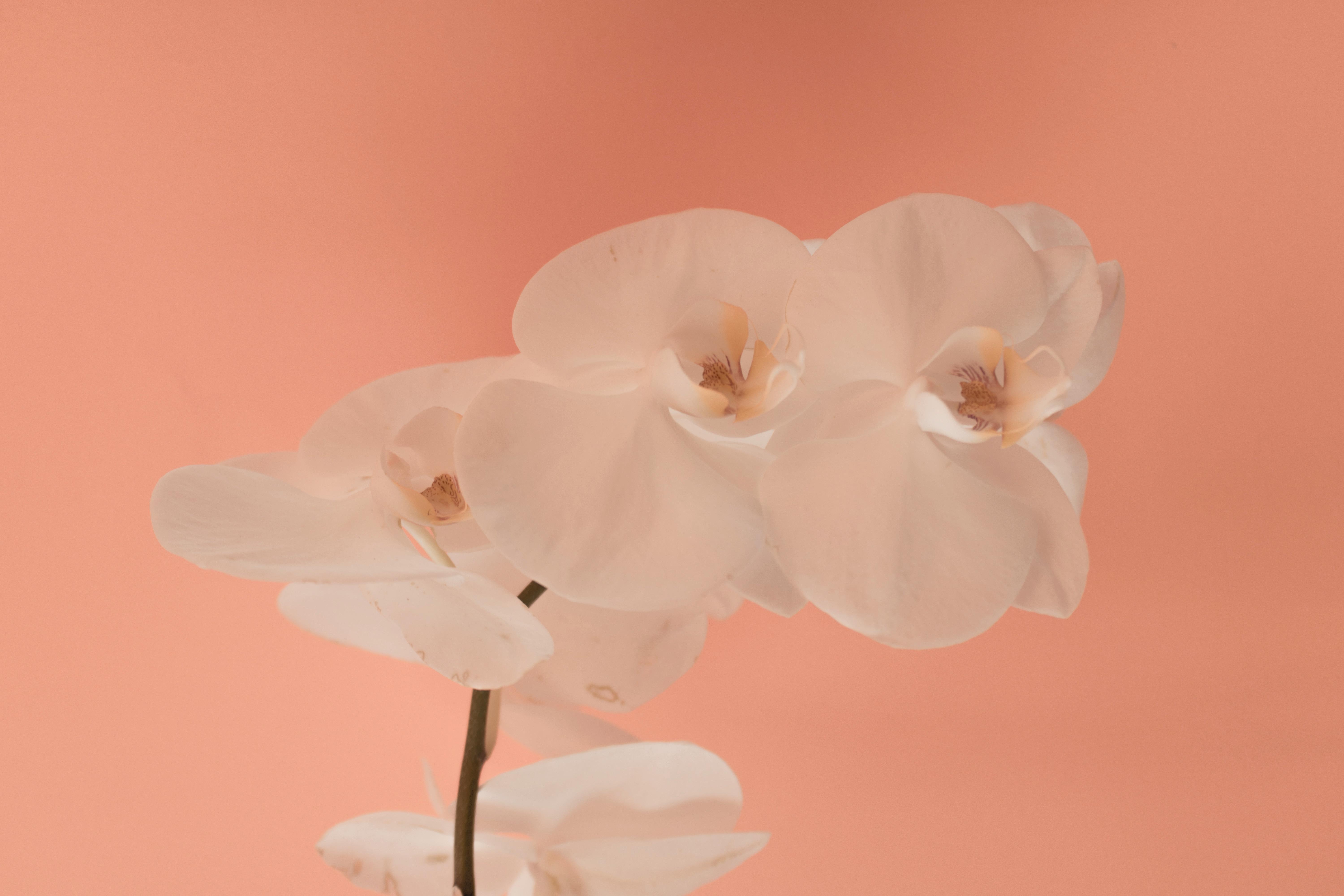



Chinese NewYear! Chinese NewYear! ] celebration!
]
Scrapbook, and Celebrations
 Helen Huynh
Helen Huynh
I am Vietnamese and I feel culturally diverse with meeting new people; art is how I express my relationship with Vietnamese culture. Journaling, designing, and meeting new people are some of my favourite things to do.

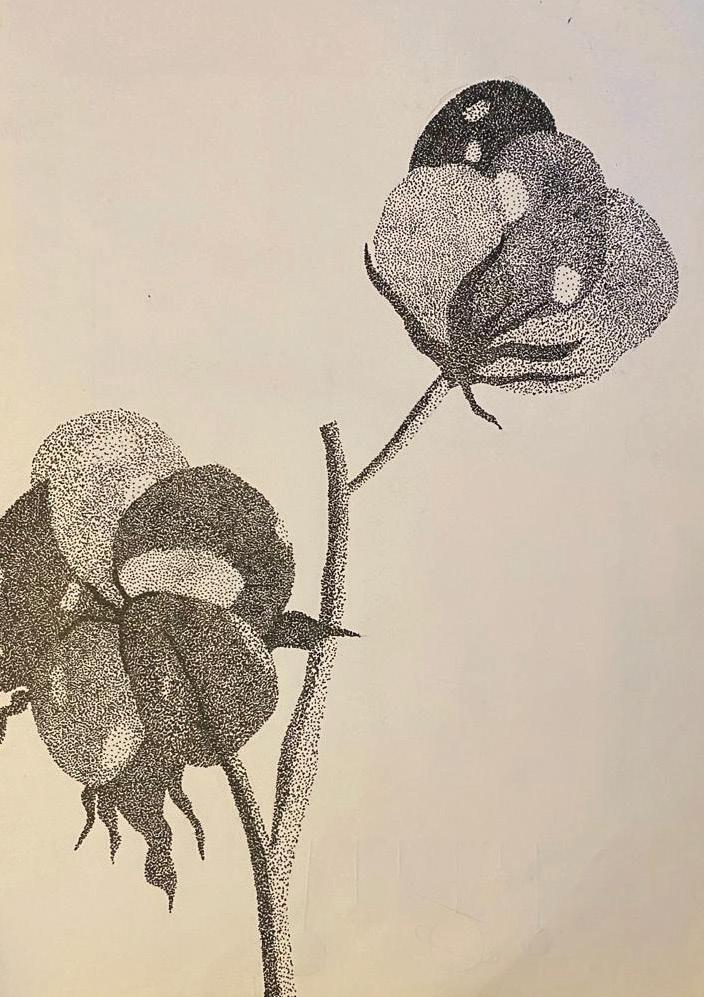
Portraits
 Jasmin Kaur
Jasmin Kaur
I am Indian, I feel confident and connected with my culture
41


Bazaar
Zahrah Bhatti
I wrote this piece for one of creative writing electives in my first year of university. The prompt was comfort and immediately my mind was drawn to the prospect of writing about a common holiday scenario that occurs whenever we take a trip back to Pakistan. Although I was born and raised in Australia, quite a lot of my family lives in Pakistan. It’s always a joy going back and reconnecting to your roots. This poem, for me, was the epitome of comfort. Somewhere I feel accepted, loved and cherished, around people who bring out the best in me. This is my comfort <3
Pastels hang
In the sky
Drawn across Your portion of the world
The moon hangs low, As the first of the glitter
Sprinkles the sky
Wind brushes against Your milky skin
As you walk the path
Your feet reminisce
Cousins pull you along
But don’t stray too far
Your aunty and mother follow
Close behind
Titles light up your journey
Colours twinkle in your eyes

Voices run wild
Taking off
I am Pakistani and happy to be
With your thoughts
Are you looking for a 3-piece?
Maybe two?
Do you want embroidery
With the sparkles?
Or do you want sparkles
On a 3D print?
Your nose tingles
The familiar scent of spices, Singing your name
Fresh oil sizzles in the Large woks
Hawkers shouting out
Their enticing deals
Your group of five Gravitates towards the Hot fries dried of oil, Sprinkled generously
With chaat masala
Your mouth opens for air
As you shove one hot fry
Into your mouth
After another
Potato mixes with spice
Flavours dance
On your tongue
Pulled to your left, You venture into the Arena of Volumes
Who can beckon you
Into their deals the fastest?
But let your eyes wander
Let the material
Speak in volumes
You’re seated on A cushioned rectangle
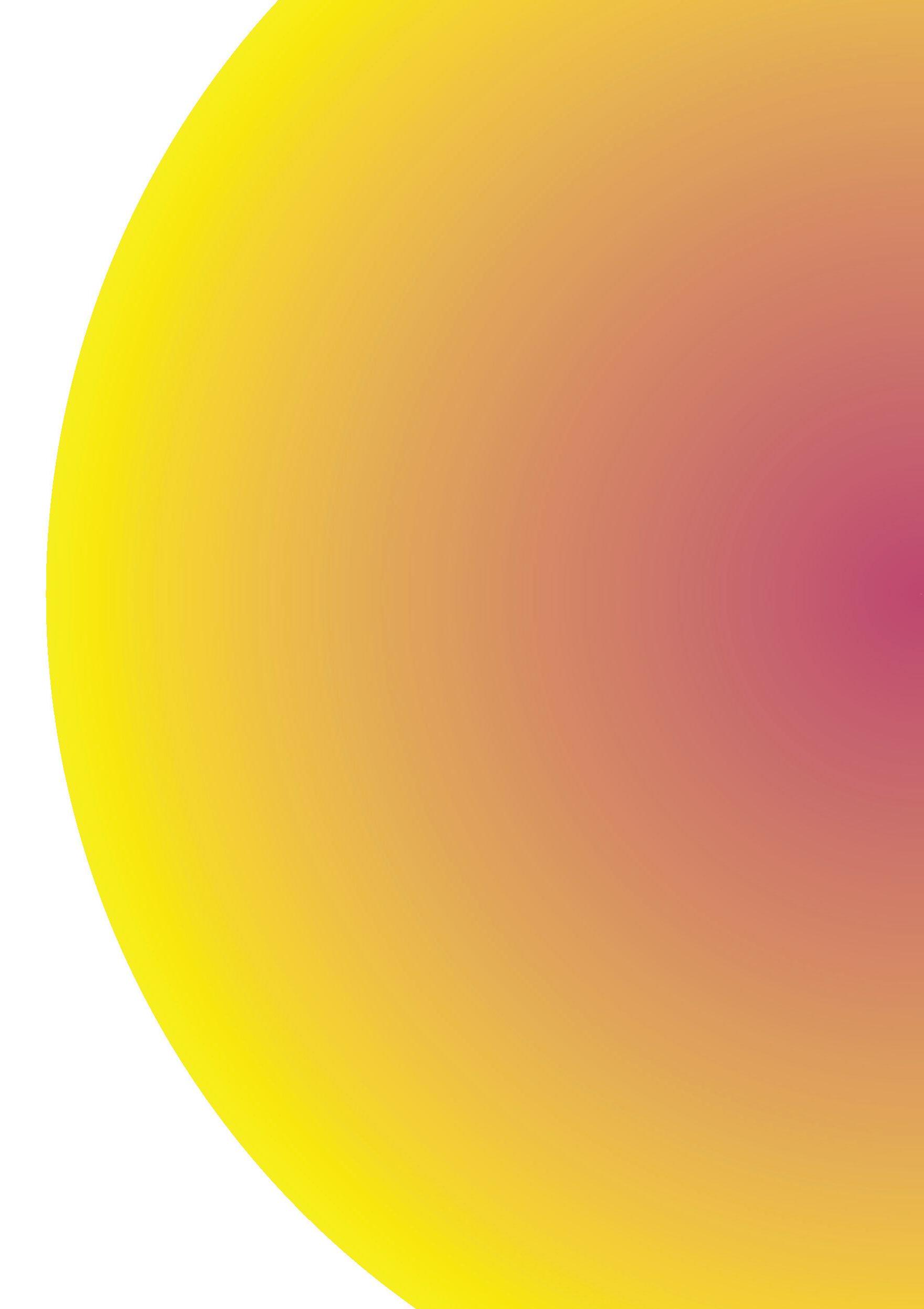
Get comfortable, You will be here a while
Let the soft music
Caress your eardrums, As your cousins’ flunk
Either side of Your cooled skin
Your ritual is simple. An unspoken agreement. Whatever has caught your eye, Whisper it into your cousins’ ears. Your accent will give you away!
Just indicate what you like Or what you love, They will translate
Vendors open plastic packets
They ruffle against Icy, dry hands
Playing with soft materials
Bright reds, watered greens, Jewels winking in Warm lights
Spectrum of colours Blend of materials

Your cousins Recommend the comfiest
Your aunty Recommends the newest In fashion
Your mum Recommends whatever You like best
Your heart warms, The consideration Lights your eyes with Scorching love
You save these moments In the sleeve you’ve created Tucked away in your mind
But savour the moment In the present moment For there is no greater feeling Than a home away from home.
I am Pakistani and happy to be



Great Grandmother’s Tapestry (1952)
 Alicia Gec
Alicia Gec
The delicate work of my great grand mothers tapestry is just smiling at me. I run my fingers accross the tapestry and almost feel like shaking; knowing that my great grandmother made this, she touched this and now I am too.
The gorgeous colours shine my eyes. The technique is just incredible, with the

colours of light meadow green, an ocean of blue, sunshine of yellow and a warm coffee brown. It looks as pretty as a picture, and as fragile as a flower. The intricate details are amazing, the design is filled with loving flowers.
I love the size of the tapestry, it’s not too big, nor too small, just perfect to
I am a proud Australian and very proud of my former Yugoslavian heritage
cuddle with. Around the flowers are short fringes of yarn, that are as soft as a teddy bear and as light as a feather. The fringes of yarn are all huddled together and look as if they’re dancing, every strand is in a different shape, showing the age of the tapestry.

The flowers on the tapestry are forever blooming, and the bees have been kissing them every now and then. The flowers look so lovely and glorious all mixed in one, it’s colours are as perfect as a rainbow and I can’t help but have a glowing feeling inside of me.
From Trieste Italy, a lovely kind woman is incredibly sick and is feeling much happier as she makes a gorgeous tapestry. That woman was my great grandmother, Maria. For eight years my grandmother and her family were living as refugees in a camp in Trieste Italy, awaiting a ticket to Australia. Maria had been sick with Bronchitis for more than ten years.
Originally, my great grandparents came from a small village called Kopacenov in Ukraine. They immigrated to Yugoslavia after World War 1, with five of their seven children. Their two youngest children (including my grandmother), were born in Croatia, Yugoslavia.
After living in Yugoslavia for seven years they decided they wanted to immigrate to a warmer continent that would be better for their health and was told they had to go to Trieste Italy and become refugees, to await migration to Australia.
Living in the refugee camp in Trieste Italy wasn’t easy for the family, they had no privacy, no freedom and very little living space. As the years passed, the family was still waiting to migrate out of Europe and my great grandmother’s health was deteriorating.
My great grandfather Ivan, who was very handy with his hands created a wooden hexagon frame for weaving tapestries.
The tapestry that I have is one of the very first that my great grandmother Maria made in 1952. She would spend a few hours a day working on it and completed the tapestry within a week.
The rectangular tapestry is 36cm in length and 18cm in width and was made out of wool. The background of the tapestry is formed on the wooden tapestry frame and once that part was completed, my great grandmother hand knitted 126 yellow flowers and 105 smaller blue flowers to make a beautiful, elegant tapestry.
When making the tapestries, she always felt much better and comforted by this relaxing past time.
My great grandmother taught my grandmother how to make tapestries and my grandmother has a number of them here in Australia. This Tapestry is very important to my mum, my grandmother and I.
When my grandmother left Trieste in 1956 with her
brother to immigrate to Australia, she believed her mum and dad (my great grandparents) would soon join them in Australia, a year later. The tapestry my grandmother took was a special reminder of her mum, but my great grandparents never came to Australia because my great grandmother Maria got terribly sick and was no longer permitted to migrate to Australia.
My grandmother never got to see her mum again, she was only fifteen years old when she left Trieste for Australia.

My great grandmother Maria passed away two years later in 1958. The tapestry then became even more special for my grandmother as a lasting memory of her mother. My grandmother gave it to my mother and now my mother has given it to me.
My family are all very close and this tapestry connects my mum and I to my great grandmother Maria, in our hearts forever.
I am a proud Australian and very proud of my former Yugoslavian heritage


Portrait of my Father
Lily Nguyen
I have been painting a series of portraits of my father who migrated to Australia by boat.
He has been a big part of my childhood, raising me in Brimbank and making me who I am today.
I am very proud of what he has done for the community eg. re-energising the St Albans East tennis club, helping with the St. Albans business group, and assisting local vendors for promoting their businesses.

I, too, can create an impact in the West by sharing my art, story, and his journey with my creative story telling!
I am Vietnamese and I am proud
indeed

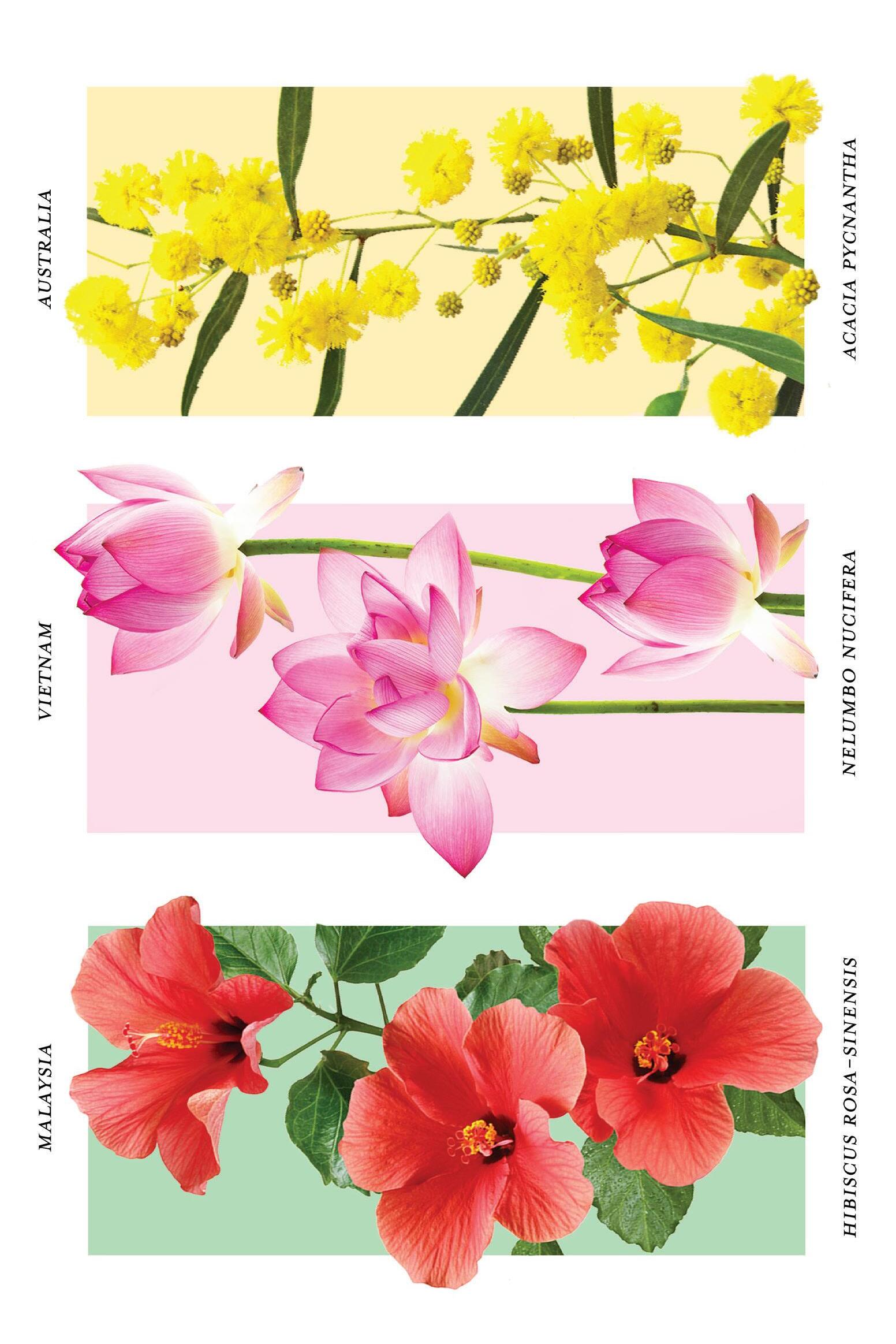
Cultural Symbiosis
Emily Unity
This artwork is an expression of my multicultural identity and the beauty of cultural symbiosis. I was born in Australia, but my parents were a Vietnamese refugee and a Malaysian migrant.
It has been both a challenging and rewarding journey to navigate finding myself within all three cultures. For me, this artwork depicts my experiences of intense diaspora, self-stigma, and multi-layered racism. However, it also shows the beauty in being a part of three unique cultures.
I have chosen to represent these with the national flowers of my cultural identities, the hibiscus rosa-sinensis for Malaysia, the nelumbo nucifera (lotus) for Vietnam, and the acacia pycnantha (golden wattle) for Australia.
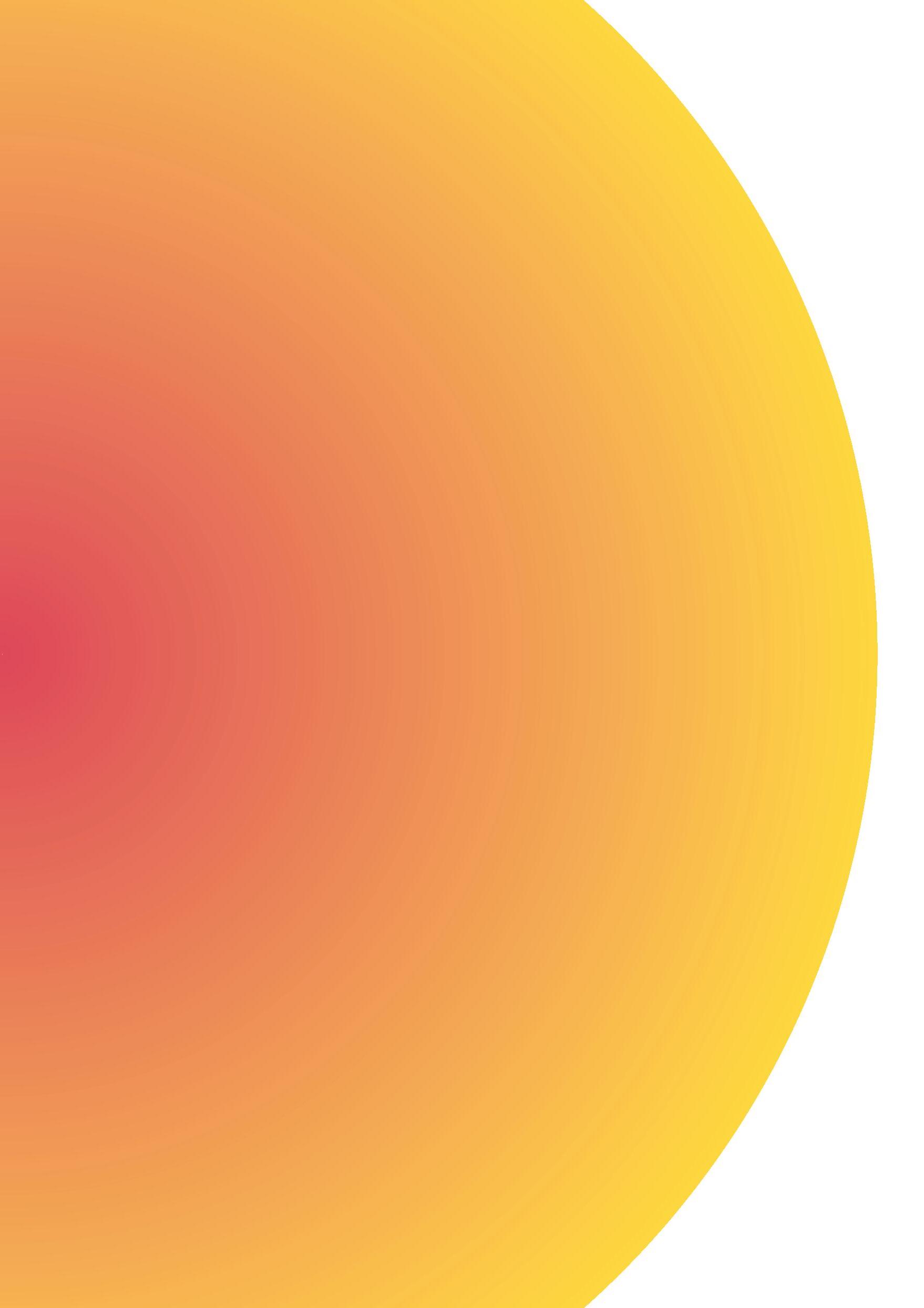
As vastly different plants can be symbiotic in nature, so too can different cultures. I hope that this artwork can start conversations about multiculturalism and the beauty of cultural symbiosis.
I am Vietnamese, Malaysian, Chinese, and Australian, and I feel proud


A Work in Progress
Chelsea Truong
I love myself.
I am proud of myself.
And I am just overall grateful for the life I have. But there has always been one part of myself that I feel like I haven’t fully embraced. That I am not fully proud of. And that is my cultural identity. Also known as my ethnicity.
When I walk around foreign airports or even Melbourne airport, I sometimes purposely carry my passport in my hand face up just to ensure people know that I am Australian.
When I walk around my local park with a family member, I will sometimes start speaking English randomly if we pass someone else, just so they know I speak fluent English.
When I think about the ideal most perfect person I wish I could be, I think about someone who is Caucasian.
I only realised a couple years ago in a conversation with friends that these above actions represented some sort of internalised racism.
The fact that I still do these things today shows me that I haven’t let go of the thought that being a white English-speaking individual would be more preferable than who I actually am.
I can blame as many things as I want- all of which I started taking in at a young age: the media portrayal of Chinese people and migrants as bad, TV shows and books where the main character is always this beautiful blonde girl, and the basic desire to fit in and excel in this society by being a ‘true’ Aussie.
I am Chinese-Vietnamese and I am learning

I strongly believe that I am not alone in the above feelings and experiences. That this is something that many people, especially young people, face. I share my open and honest experiences here, which I am slightly ashamed of, to show them that they’re not alone and to open what I feel is almost an awkward taboo conversation.
At the end of the day, I know that my cultural background and how I look is a part of who I am. I know that no ethnicity or skin colour is worth less than another. And those are just facts that I carry with me in my journey of being proud of my cultural heritage and ethnicity.

I am working on it and that’s okay.


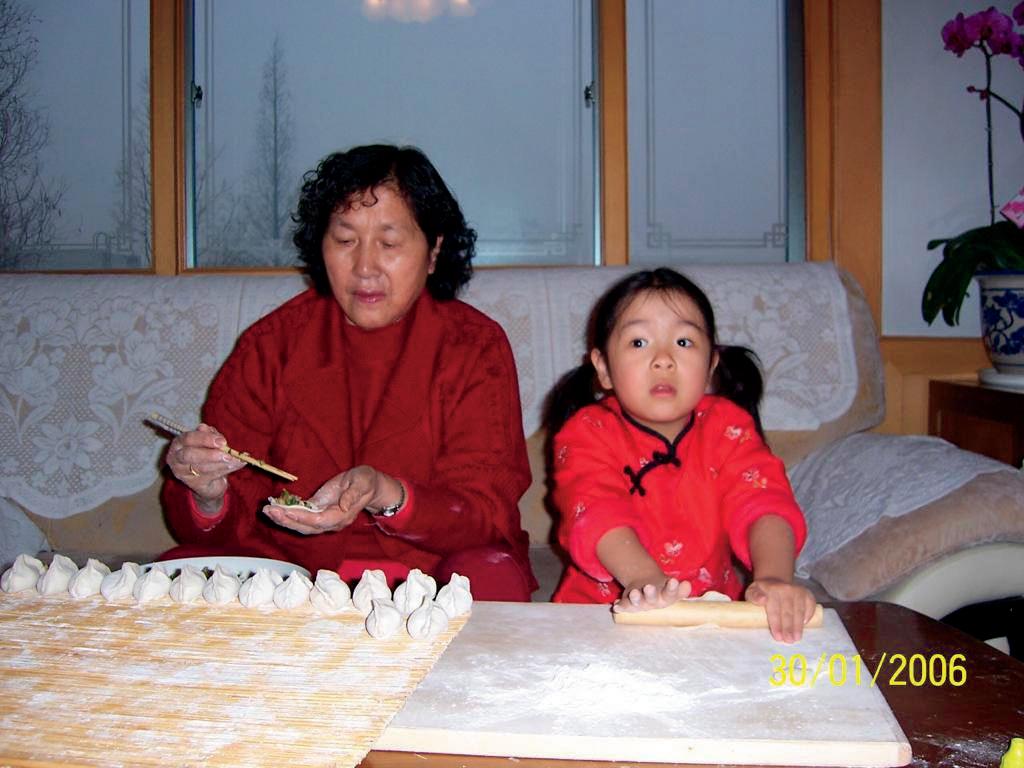


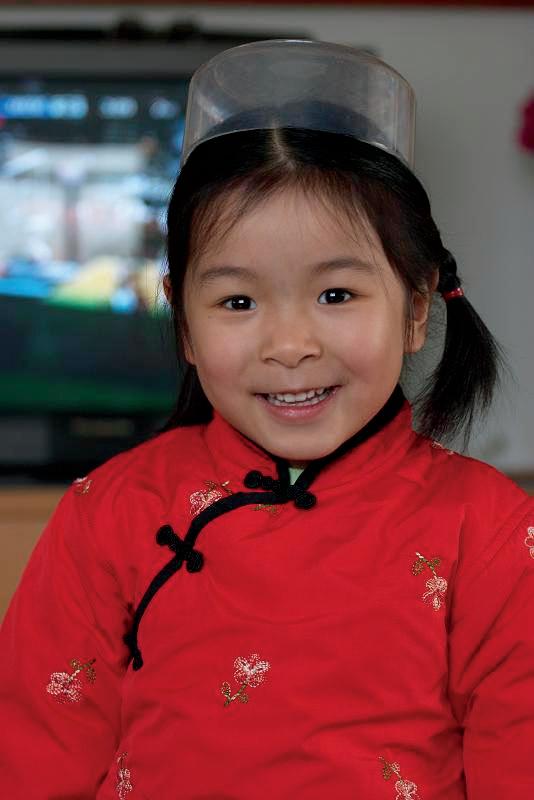

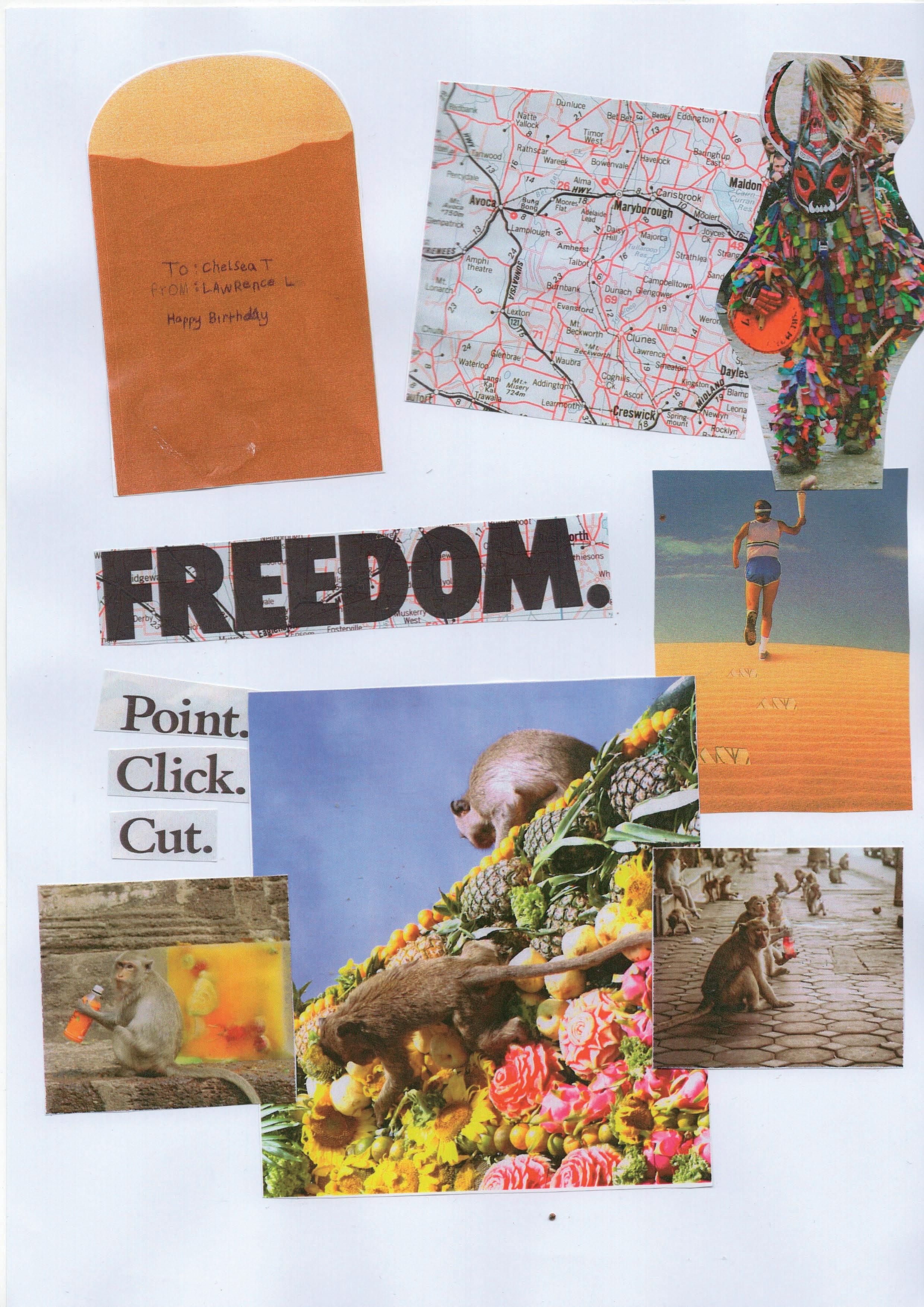


My Journey
Abubakari Irakoze
My journey through life so far has been one about building up my identity across many different places in my life.
Trying to make sure I follow religious teachings, making sure that I am able to proudly display myculture, and making sure I am fitting in socially.
Now, fitting in socially was a challenge as it meant merging every aspect of my life into one. It was especially difficult as the world told me I should be a certain way as a young African man but I didn’t always agree. Not in the way I behaved, how I dressed, my interests, and the activities I took part in.
Building myself meant going against my social group at times, which can
be daunting when it’s all you have to identify yourself as in school.
I always encourage others to take that step out of their comfort zone as there are so many opportunities I loved that I would have missed had I not had the encouragement of others to just try it.
Life’s full of so many challenges that are so worth overcoming, and I hope this little message can inspire you to try something you might have been considering.

Thank you for your time and take care.
I am a proud Burundian trying to leave a positive mark in history

If any of these stories have raised concerns for yourself or someone you know, please visit the Brimbank Youth Directory to access local support.
https://brimbankyouthdirectory.com/
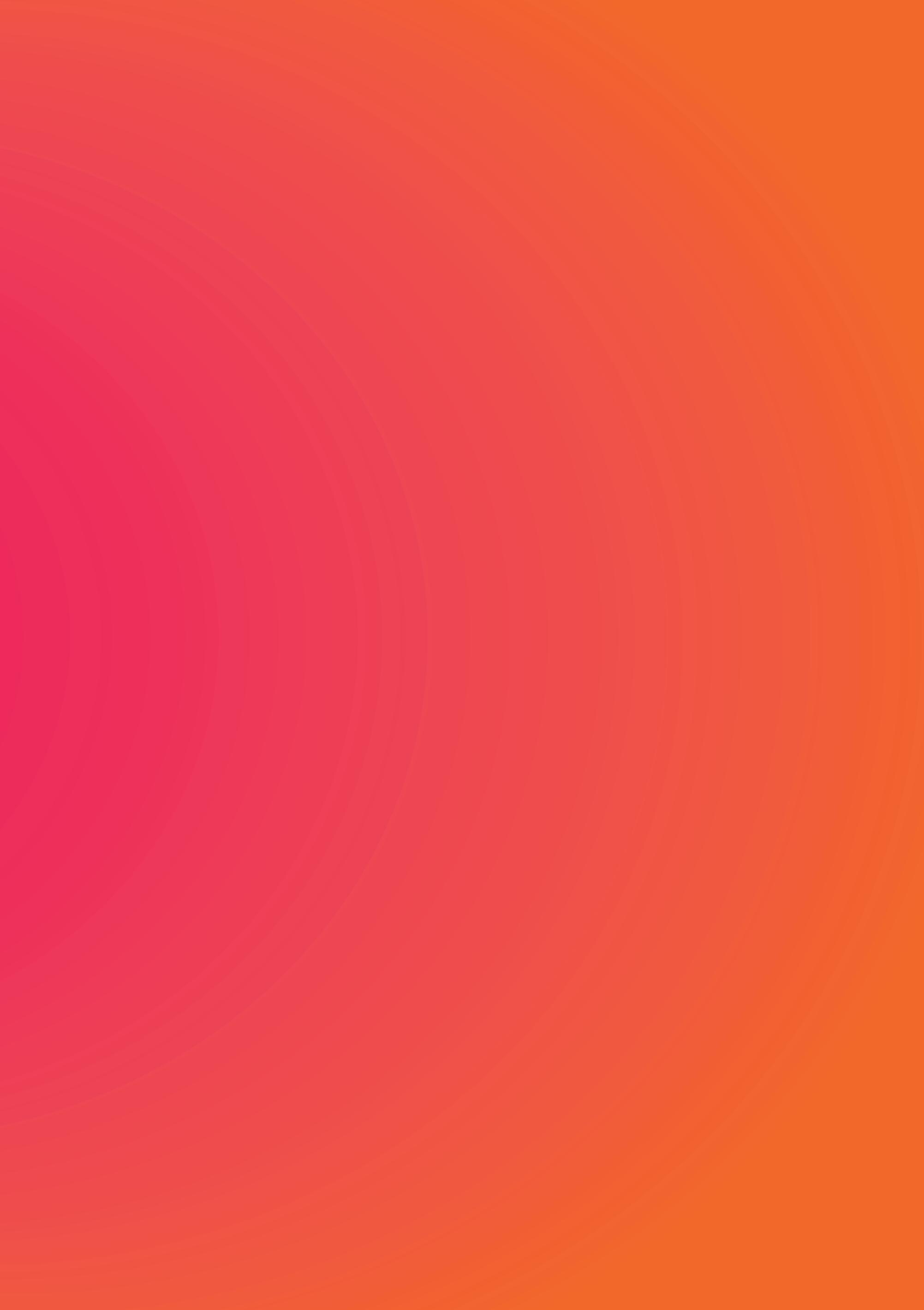
CONTACT US
Telephone: 9249 4000
Email: bys@brimbank.vic.gov.au
Post: Brimbank City Council PO Box 70
SUNSHINE VIC 3020
Website: brimbankyouth.com
Like us on Facebook: Brimbank Youth Services
Follow us on Instagram: @brimbankyouth
Brimbank City Council respectfully acknowledges and recognises the Wurundjeri and Bunurong peoples as the Traditional Custodians of this land and pays respect to their Elders past, present and future.













 Kara Evangelista
Kara Evangelista
























 Abubakari Irakoze
Abubakari Irakoze






















 Helen Huynh
Helen Huynh


 Jasmin Kaur
Jasmin Kaur






 Alicia Gec
Alicia Gec















